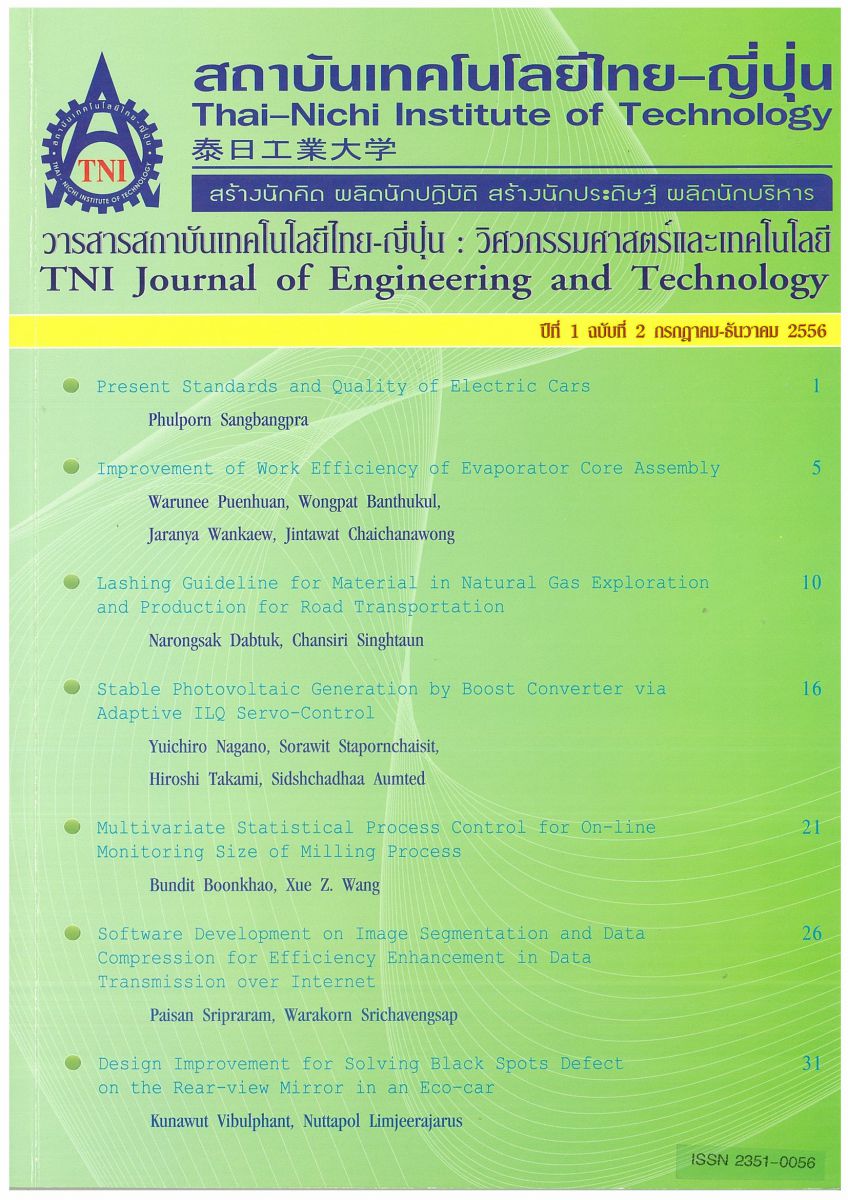Multivariate Statistical Process Control for On-line Monitoring Size of Milling Process
Main Article Content
Abstract
Ultrasonic attenuation spectroscopy (UAS) is an attractive process analytical technology (PAT) for on-line realtime characterisation of slurries for particle size distribution (PSD) estimation. It is however only applicable to relatively low solid concentrations since existing instrument process models still cannot fully take into account the phenomena of particle - particle interaction and multiple scattering, leading to errors in PSD estimation. This paper investigates an alternative use of the raw attenuation spectra for direct multivariate statistical process control (MSPC). The UAS raw spectra were processed using principal component analysis. The selected principal components were used to derive two MSPC statistics, the Hotelling's T2 and square prediction error (SPE). The method is illustrated and demonstrated by reference to a wet milling process for processing nanoparticles.
Article Details
Article Accepting Policy
The editorial board of Thai-Nichi Institute of Technology is pleased to receive articles from lecturers and experts in the fields of engineering and technology written in Thai or English. The academic work submitted for publication must not be published in any other publication before and must not be under consideration of other journal submissions. Therefore, those interested in participating in the dissemination of work and knowledge can submit their article to the editorial board for further submission to the screening committee to consider publishing in the journal. The articles that can be published include solely research articles. Interested persons can prepare their articles by reviewing recommendations for article authors.
Copyright infringement is solely the responsibility of the author(s) of the article. Articles that have been published must be screened and reviewed for quality from qualified experts approved by the editorial board.
The text that appears within each article published in this research journal is a personal opinion of each author, nothing related to Thai-Nichi Institute of Technology, and other faculty members in the institution in any way. Responsibilities and accuracy for the content of each article are owned by each author. If there is any mistake, each author will be responsible for his/her own article(s).
The editorial board reserves the right not to bring any content, views or comments of articles in the Journal of Thai-Nichi Institute of Technology to publish before receiving permission from the authorized author(s) in writing. The published work is the copyright of the Journal of Thai-Nichi Institute of Technology.
References
A. S. Dukhin and P. J. Goetz. Ultrasound for characterizing colloids: Particle sizing, zeta potential, rheology, Elsevier, London. 2002.
M.J.W. Povey, “Acoustic methods for particle characterization”, KONA, vol. 24, pp. 126–133, 2006.
J.R. Allegra and S.A. Hawley, “Attenuation of sound in suspensions and emulsions: Theory and experiments”, Journal of the Acoustical Society of America, vol. 51, pp. 1545-1564, 1972.
P.S. Epstein and R.R. Carhart, “The absorption of sound in suspensions and emulsions. I. Water fog in air”, Journal of the Acoustical Society of America, vol. 25, pp. 553-565, 1953.
C.M. Atkinson and H.K. Kytömaa, “Acoustic wave speed and attenuation in suspensions”, International Journal of Multiphase Flow, vol. 18, pp. 577-592, 1992.
J.M. Evans and K. Attenborough, “Coupled phase theory for sound propagation in emulsions”, Journal of the Acoustical Society of America, vol. 102, pp. 278-282, 1997.
A.K. Hipp, G. Storti and M. Morbidelli, “On multiple-particle effects in the acoustic characterization of colloidal dispersions”, Journal of Physics D: Applied Physics, vol. 32, pp. 568-576, 1999.
T. Oja, J.G. Dosramos, R.W. Reed, “Acoustic analysis of concentrated colloidal systems” in L.T. Provder, J. Texter (Eds.), Particle sizing and characterization, ACS symposium series, vol. 881, American Chemical Society, Washington, pp. 231-248, 2004.


